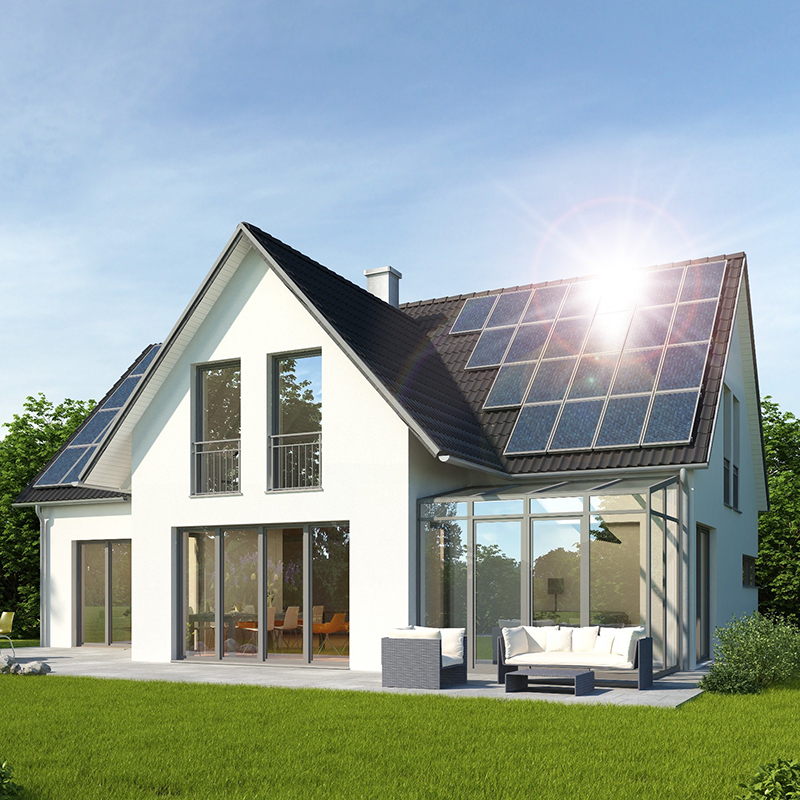How Does a Solar Roof Work to Generate Electricity? - latestfeeds/Blog GitHub Wiki
In this blog, we will discuss solar roofs, the best solar companies, solar panel installation, how a solar roof generates electricity, and other related topics.

What Is a Solar Roof?
One type of roofing structure that harnesses solar energy while maintaining a conventional roof appearance is called a solar roof. Unlike regular solar panels, which are installed on top of your roof, a solar roof Fairfax VA, utilizes special solar tiles or shingles that become an integral part of the roof itself.
These solar tiles, like conventional solar panels, are composed of materials that can absorb sunlight and convert it into power. The primary difference is that solar roofs blend in more seamlessly with your home’s design and don’t appear bulky.
How Does a Solar Roof Generate Electricity?
Let’s go step by step to understand how a solar roof creates power:
1. Sunlight Hits the Solar Tiles
The process begins when the sun shines on your roof. The solar tiles are made with photovoltaic (PV) cells — these are tiny units that absorb sunlight.
2. Conversion to Direct Current (DC)
The PV cells inside the tiles convert sunlight into direct current (DC) electricity. This is raw energy that isn’t yet ready to power your appliances.
3. Inverter Changes DC to AC
Your home uses alternating current (AC) electricity, so the DC power from the solar roof needs to be converted to AC. That’s where the inverter comes in. It converts DC power into usable AC electricity.
4. Powering Your Home
Once converted, the electricity flows through your home’s electrical system. It powers your lights, fans, fridge, washing machine, and everything else that uses electricity.
5. Storing Extra Energy
If your solar roof produces more power than your home needs, that extra electricity can be stored in a solar battery (if you have one) or sent back to the power grid. You may even get credits from your utility company for sharing power.
How Do You Get a Solar Roof?
If you’re interested in a solar roof, here’s how the process usually works:
1. Consult a Solar Expert
You first reach out to one of the best solar companies in Virginia. They’ll evaluate your home’s sunlight exposure, roof angle, and your energy needs.
2. Design and Planning
The company will create a design tailored to your roof's size and shape. They’ll also estimate how much power the system will produce and what it will cost.
3. Solar Panel Installation
In this case, solar panel installation VA means replacing your current roofing material with solar tiles. The process can take a few days to a few weeks, depending on the size of your roof.
4. Connection and Testing
After installation, the system is linked to both the electrical grid and your home's power supply. The installer runs tests to make sure everything works safely and efficiently.
5. Enjoy Free Solar Power!
Once everything is running, you’ll start getting free electricity from the sun. Over time, this can save you a significant amount of money on your energy bills.
Benefits of a Solar Roof
Let’s look at some of the biggest reasons why homeowners are switching to solar roofs:
Save Money on Energy Bills
Once installed, your electricity comes from the sun, which is a free source.
Environmentally Friendly
Solar energy benefits the environment and lowers your carbon footprint.
Modern Look
Solar roofs look sleek and clean, blending in with your home’s design.
Long-Lasting
Many solar tiles are built to last 25 years or more with little maintenance.
Increased Home Value
Homes with solar roofs are often more attractive to buyers.
Is It Worth It?
A solar roof is a big investment, but it pays off over time. If you plan to stay in your home for many years, the savings on your power bill can cover the cost of the roof — and sometimes more.
Plus, many areas offer tax credits, rebates, or other financial help to make solar roofing more affordable. You may learn more about your alternatives and what fits your budget from the top solar firms.
Considerations Prior to Solar Roof Installation
Roof Age: If your roof is old, replacing it with a solar roof makes sense. However, if your roof is still relatively new, installing regular solar panels may be a better option.
Sunlight Access: A roof in full sun is perfect. Lots of shade can reduce performance.
Budget: Solar roofs may cost more upfront than panels, but they offer long-term value.
Local Laws: Some areas require permits or inspections. A good solar company will handle this for you.
FAQs related to solar roofs:
Q1: Can I use a solar roof during a power outage?
Not unless you have a solar battery installed. A battery stores extra power, allowing your home to continue running during outages.
Q2: How long does a solar roof last?
Most solar roof tiles are designed to last 25 to 30 years with minimal maintenance.
Q3: Is maintenance required for a solar roof?
Very little. Usually, just occasional cleaning to remove dust or leaves. No moving parts means fewer chances of breakdown.
Q4: Will a solar roof work in winter or cloudy weather?
Yes, though it may produce less power on cloudy days. It still works — just not at full strength.